Nationality American Role Developer Name George Hotz | Website www.geohot.com Other names geohot | |
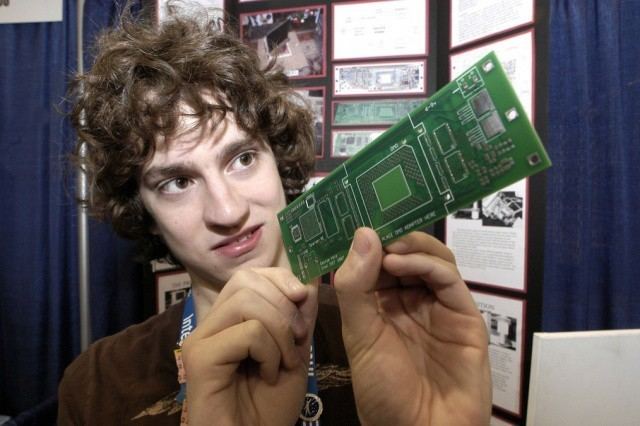 | ||
Full Name George Francis Hotz Jr. Parents Marie Minichiello, George Hotz, Sr. Similar People Sergey Brin, David Drummond, Larry Page, Eric Schmidt, Steve Wozniak | ||
Hacker george hotz on the future of autonomous cars
George Francis Hotz (born October 2, 1989), alias geohot, is an American hacker and creative consumer known for unlocking the iPhone, allowing the phone to be used with other wireless carriers, contrary to AT&T's and Apple's intentions. He developed the limera1n jailbreak tool and bootrom exploit for iOS. He is also noted for his technical efforts and publicity with reverse engineering the PlayStation 3 video game console, and for subsequently being sued by and settling with Sony. As of September 2015, he is working on his vehicle automation machine learning company comma.ai.
Contents
- Hacker george hotz on the future of autonomous cars
- Ai bythebay io george hotz self driving lessons from comma ai
- Personal life
- iOS device security
- PlayStation 3 security
- Sony lawsuit
- Rooting the ATT and Verizon Galaxy S5
- Career
- Commaai
- Other activities and recognition
- References

Ai bythebay io george hotz self driving lessons from comma ai
Personal life
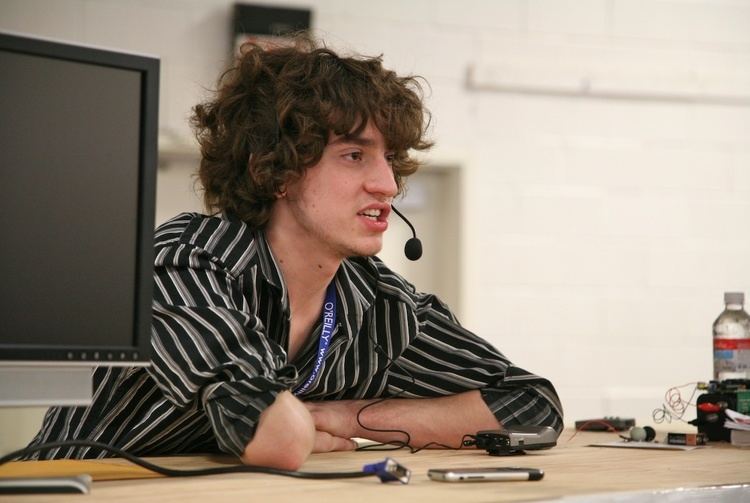
He attended the Bergen County Academies, a magnet public high school in Hackensack, New Jersey. He attended Academy for Engineering and Design Technology. Hotz is an alumnus of the Johns Hopkins Center for Talented Youth program. Hotz also briefly attended Rochester Institute of Technology and Carnegie Mellon University.
iOS device security
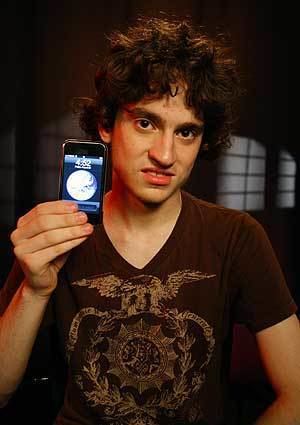
In August 2007, seventeen-year-old George Hotz became the first person reported to carrier-unlock an iPhone. According to Hotz's blog, he traded his second unlocked 8 GB iPhone to Terry Daidone, the founder of Certicell, for a Nissan 350Z and three 8 GB iPhones.

In September 2007, an anonymous group achieved a software-only unlocking method to complement Hotz's hardware-based unlocking method.
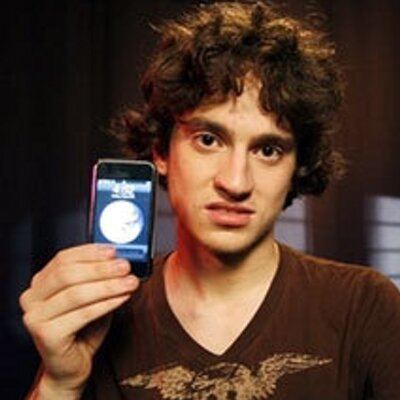
On July 13, 2010, Hotz announced the discontinuation of his jailbreaking activities, citing demotivation over the technology and the unwanted personal attention. Nevertheless, he continued to release new software-based jailbreak techniques until October 2010.
PlayStation 3 security
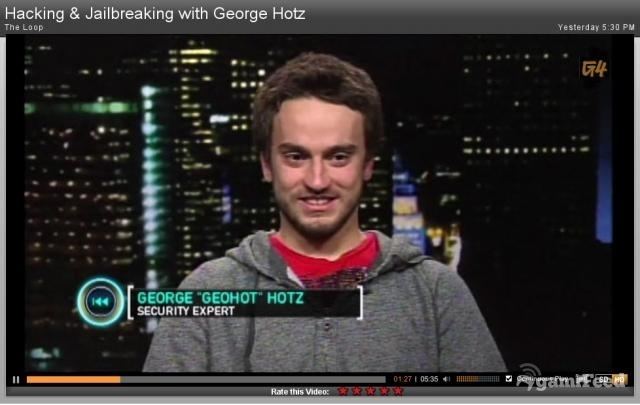
In December 2009, Hotz announced his initial intentions to breach security on the Sony PlayStation 3. Five weeks later, on January 22, 2010, he announced that he had performed his first theoretical achievement. This consists of the initial read and write access to the machine's system memory as well as hypervisor level access to the machine's CPU.

On January 26, 2010, Hotz released the exploit to the public. On March 28, 2010, Sony responded by announcing their intention to release a PlayStation 3 firmware update that would retroactively remove the OtherOS feature from all models, a feature that was already absent on the newer Slim revisions of the machine.
On July 13, 2010, never having achieved any method of reading, installing, or modifying software on the PS3, Hotz posted a message on his Twitter account stating that he had abandoned his efforts of trying to crack the PS3 any further due to the system security's extreme difficulty.
On December 29, 2010, notable hacking group fail0verflow, known for the reverse engineering of security models found in consumer electronics devices, performed an academic presentation at the 27th Chaos Communications Congress technical conference, of their accomplishments with the PlayStation 3. They presented the methods they'd devised for having successfully penetrated the device's security model, yielding the root signing and encryption keys. These keys are the essential element of a full (and even minimally usable) breach, capable of installing and running any new software on any PlayStation 3 unit.
On January 2, 2011, Hotz posted a copy of the root keys of the PlayStation 3 on his website. These keys were later removed from his website as a result of legal action by Sony against fail0verflow and himself. In response to Hotz's continued publication of PS3 exploit information, Sony filed on January 11, 2011 for an application for a temporary restraining order (TRO) against him in the US District Court of Northern California. On January 14, 2011, Hotz appeared in an interview on G4's The Loop, where he explained his involvement with the PlayStation 3.
Sony lawsuit
After the root keys of the console were published, Sony initiated litigation against George Hotz and predecessor PlayStation 3 hacking group known as fail0verflow. Hotz published his commentary on the case, including a song about the "disaster" of Sony. Sony in turn has demanded social media sites, including YouTube, to hand over IP addresses of people who visited Geohot's social pages and videos; the latter being the case only for those who "watched the video and 'documents reproducing all records or usernames and IP addresses that have posted or published comments in response to the video".
PayPal has granted Sony access to Geohot's PayPal account, and the judge of the case granted Sony permission to view the IP addresses of everyone who visited geohot.com. In April 2011, it was revealed that Sony and Hotz had settled the lawsuit out of court, on the condition that Hotz would never again resume any hacking work on Sony products.
At the end of April 2011, an anonymous hacker broke into the PlayStation Network and stole personal information of some 77 million users. Hotz denied any responsibility for the attack, and said "Running homebrew and exploring security on your devices is cool; hacking into someone else's server and stealing databases of user info is not cool".
Rooting the AT&T and Verizon Galaxy S5
In June 2014, Hotz published a root exploit software hack for Samsung Galaxy S5 devices used in the US market. The exploit is itself built around Linux kernel CVE-2014-3153, which was discovered by hacker Pinkie Pie, and it involves an issue in the Futex subsystem that in turn allows for privilege escalation. The exploit, known as towelroot, was designated a "one-click Android rooting tool" by the hacking community because it was designed to be installed quickly like an App; other rooting hacks were typically uploaded from a nearby PC with a cable and necessitated rebooting the device with a special set of key presses.
Although originally released for the Verizon Galaxy S5, the root exploit was made compatible with most Android devices available at that time. For example, it was tested and found to work with the AT&T Galaxy S5, Nexus 5, and Galaxy S4 Active. Updates continued to be applied to the root exploit to increase its capabilities with other devices running Android. Updates to the Android operating system closed the source of the exploit. Samsung officially responded to the towelroot exploit by releasing updated software designed to be immune from the exploit.
Career
In addition to having made a meaningful side income from public donations solicited for his exploits, Hotz has been employed at Facebook and Google.
On June 27, 2011, ZDNet freelance reporter, Emil Protalinski reported that according to a Facebook spokesman, Hotz had been hired by the company in an unknown role. However, according to a CNET article, he had actually been employed since May, which was confirmed by Facebook. In January 2012, Hotz was no longer employed by Facebook.
On July 16, 2014, Google hired Hotz to work in their software security auditing team called Project Zero, which "hopes to find zero-day vulnerabilities before the NSA". Hotz worked in Project Zero for 5 months where he developed Qira - an open source program for dynamically analysing application binaries.
In January 2015, Vicarious.com hired Hotz to develop AI algorithms where he worked for 7 months.
Comma.ai
Since September 2015, Hotz has been working on his own AI startup called comma.ai. In an interview with Bloomberg, Hotz revealed he is building vehicular automation technology based on artificial intelligence algorithms. Hotz has built a working self-driving 2016 Acura ILX, which he demonstrated on the I-280 in a video. The video prompted a cease and desist letter from the California Department of Motor Vehicles. Hotz wants to sell his technology to Tesla Motors and he has reported to have talked to CEO Elon Musk and is working on proving his technology to be superior to that of Mobileye, which, at the time, was used for Tesla Autopilot. Hotz claims that Musk offered him $12 million (minus $1 million for every month it took Hotz to work on the task) to create a driving system that could replace the MobilEye solution currently used in Tesla vehicles. Tesla later released a statement on their website citing corrections to the Bloomberg article, stressing that their autopilot system was developed in-house, with a vision chip component from MobilEye, instead of one separate autopilot system manufactured by MobilEye, as suggested by Hotz in the interview with Bloomberg. Tesla CEO Elon Musk offered advice on Hotz's self-driving car project in a recent interview.
On October 27, 2016, the NHTSA informed Hotz that this product was legally required to comply with Federal Motor Vehicle Safety Standards, and requested information that would confirm such compliance. A day later, George Hotz tweeted from Shenzhen that the comma one was cancelled. Kristen Lee stated on Jalopnik that the NHTSA was simply trying to open a dialog, and commented that "Instead, they got the worst attitude possible from Silicon Valley: try and regulate us, thought leaders, and we’ll take our ball and go home."
comma.ai open sourced their self driving car software on November 30, 2016, emphasising its intended use for research without any warranty.
Other activities and recognition
Hotz was a finalist at the 2004 ISEF competition in Portland, Oregon with his project "The Mapping Robot". Recognition included interviews on the Today Show and Larry King. Hotz was a finalist at the 2005 ISEF competition, with his project "The Googler". Continuing with robots, Hotz competed in his school's highly successful Titanium Knights battlebots team.
Hotz competed in the 2007 Intel International Science and Engineering Fair, a science competition for high school students, where his 3D imaging project, entitled "I want a Holodeck", received awards and prizes in several categories including a $20,000 Intel scholarship. He travelled to Sweden to speak about the project at the Stockholm International Youth Science Seminar.
Hotz has received considerable attention in mainstream media, including interviews on the Today Show, Fox, CNN, NBC, CBS, G4, ABC, CNBC, and articles in several magazines, newspapers, and websites, including Forbes, and BBC.
In March 2008, PC World magazine listed Hotz as one of the top 10 Overachievers under 21.
In August 2013, Hotz attended DEFCON with Carnegie Mellon's Plaid Parliament of Pwning (PPP). PPP placed first in the DEFCON Capture the Flag (CTF) tournament. Later in 2013, Hotz also competed in CSAW 2013. Working alone, Hotz took first place under the pseudonym tomcr00se.
In August 2014, Hotz once again competed as part of the eight person team making up Carnegie Mellon's Plaid Parliament of Pwning (PPP) at DEFCON. PPP won the DEFCON CTF tournament for a second year in a row and also placed first in the DEFCON "Crack Me If You Can" tournament.
